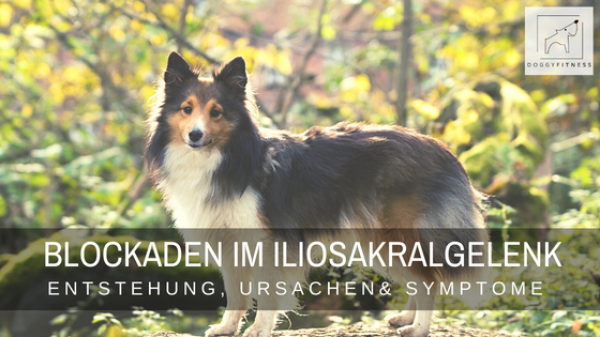Our dogs, like us humans, can also get blockages. The sacroiliac joint, or ISG for short, is particularly frequently affected.
What is the sacroiliac joint in dogs? Blockades in the dog
The sacroiliac joint, which is also called the sacroiliac joint or Art. Sacroiliaca, forms the articulated connection between the trunk and the pelvic girdle of the dog. It is designed in pairs. In this joint, the sacrum is inserted between the two iliac wings. The sacrum and ilium form an articulated connection. It is a very tight joint that allows little movement. The sacroiliac joint is not equipped with independent muscles. The muscles that pull over the ISG act on the hip or spine. The joint is surrounded by many ligaments and tendons that keep it stable in position.
Incidentally, the sacrum itself consists of three vertebrae that have grown together – the sacral vertebrae.
What is the function of the sacroiliac joint?
The ISG has various functions. On the one hand, it forms the connection between the torso and the pelvic girdle and has a shock-absorbing effect here. On the other hand, it acts on the torso when the hind limbs bear the load, forming a bridging link with a damping function. Blockades in the dog
What is a blockage and how does it occur?
Blockages can occur in the muscles and in the joint. Thus, a muscle that is close to the joint can trigger a joint blockage by becoming tense, causing immobility of the joint. You can imagine this in such a way that when a muscle is very strongly loaded or stretched, it contracts in a jerky manner. This is to protect the joint. If this muscle blockage is not treated and worsens, it will cause the affected joint to move out of position and create a joint blockage.
These are the consequences
The joint can no longer be moved normally – i.e. physiologically. As a result, the pumping motion of the joint, via which the cartilage is nourished, is no longer given. This means that there is a lack of nutrients and the cartilage can be damaged. The viscosity of the synovial fluid also changes and the joint capsule “shrinks”.
Osteoarthritis develops. But this is not without consequences for the surrounding musculature. Due to the reduced load, it becomes weaker. This, in turn, puts additional stress on the joint. The dog is in a vicious circle, which in its course also means pain for the dog.
Blockages in the sacroiliac joint of the dog – what are the causes? Blockades in the dog
Possible causes of a blockage in the dog’s ISG are very often problems in the dog’s spine, hip or knee. Thus, they are secondary and do not originate directly from the sacroiliac joint. However, intense stress such as jumping, jerky movements, wild play, falls or persistent poor posture can also cause ISG blockage in dogs. Furthermore, an overload, an asymmetrical physique can lead to blockages and advancing age also favors the development.
What are the symptoms of a blockage of the sacroiliac joint of the dog?
When a dog suffers from a blockage of the sacroiliac joint, the symptoms can be varied.
- Avoiding movements such as climbing stairs or jumping into a car
- Problems with changes of position such as sitting down, lying down or standing up
- Sitting down at an angle with bent leg
- Lameness
- Pain
- Gentle posture and stiff gait
Please note that the above signs can always indicate other diseases.
In any case, if your dog shows one or more of the signs mentioned above, I recommend that you take him to your physical therapist and/or veterinarian for appropriate treatment. Blockades in the dog
All the love, your Tina
Dieser Beitrag ist auch verfügbar auf:
Français (French)
Deutsch (German)
Español (Spanish)
















